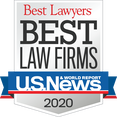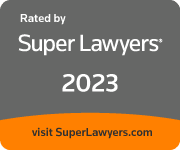|
For the 17th consecutive year, Lewis Babcock co-founder Keith Babcock has been selected to the South Carolina “Super Lawyers” list of leading attorneys.
Mr. Babcock has practiced in South Carolina for more than 40 years. He’s focused almost exclusively on litigation, including business disputes. He’s long been highly regarded in the practice area of eminent domain and is an emeritus member of the Owners’ Counsel of America. That organization consists of lawyers who represent property owners in eminent domain and condemnation cases. Mr. Babcock has been listed in the “Super Lawyers” directory and the related “South Carolina Super Lawyers” publication yearly since 2008. With a goal of creating a comprehensive guide that individuals and businesses who need legal services can turn to, “Super Lawyers” selects attorneys for inclusion based on a patented process. The first step is a nomination from a college. Next, independent research is conducted, and attorneys are evaluated on 12 indicators of peer recognition and professional achievement. Next, a panel of peers reviews attorneys in the same practice area before final selection. Only about 5 percent of the attorneys in each state are included in “Super Lawyers” each year. COLUMBIA, S.C. – At Lewis Babcock law firm, we’re fearless in our dedication to serving our clients. Our clients know that, and so do our peers in the legal profession.
It’s no surprise that every attorney in our firm has been honored by “Best Lawyers in America®” in its 2024 edition. Here they are with the practice areas in which they are being recognized among their peers in the Columbia area:
Founding Partner Keith Babcock has made the Best Lawyers list every year since 2007. As noted above, he was yet again honored in the area of eminent domain, a topic in which he is particularly known and widely respected. He regularly addresses groups across the state and country on that area of law. He’s the only full member in South Carolina of the Owners’ Counsel of America, a national group of eminent domain attorneys who represent landowners. Partner Ariail King is a new addition to the Best Lawyers list, as it is her first time being recognized for her work in mass tort litigation. She focuses her practice on appellate cases in addition to class actions. The goal of “Best Lawyers” is to capture the consensus opinion of leading lawyers about the abilities of their colleagues within the same geographic regions and same practice areas. The selection process begins with a nomination from a colleague and then peer review from attorneys previously recognized in “Best Lawyers.” Independent research also is conducted. For more information, go to https://www.bestlawyers.com/methodology. For the sixth year in a row, Lewis Babcock founding partner Keith Babcock has been honored by Columbia Business Monthly in its annual “Legal Elite of the Midlands” list for 2023.
The annual guide is again recognizing him in two practice areas – business litigation and eminent domain. His 40 years of experience have focused on business disputes, professional negligence, and eminent domain, and he is particularly known and respected widely in the last category. He has conducted Continuing Legal Education seminars on eminent domain across the state and the country, and is the only South Carolina attorney who is a full member of “Owners’ Counsel of America,” a national eminent domain organization. Columbia Business Monthly has published the “Legal Elite” list since 2010. The process includes nomination and voting by fellow attorneys throughout the Midlands. Those listed represent the top 10 attorneys in each of the Legal Elite’s 20 practice areas. The 2023 edition of South Carolina Super Lawyers again includes Keith Babcock, who has now been honored by the annual guide of leading attorneys 16 times.
He is a founding member of Lewis Babcock law firm, which represents plaintiff and defense clients all across South Carolina. Mr. Babcock has practiced law in South Carolina for more than 40 years. His practice consists almost entirely of litigation, concentrating in particular on business disputes, eminent domain, and professional negligence. He is South Carolina’s only member of the Owners’ Counsel of America — an organization of attorneys who advocate for property owners in eminent domain and condemnation cases. Mr. Babcock has also been selected for inclusion in the Best Lawyers in America® from 2007 through 2023, and South Carolina Super Lawyers® from 2008 through 2023. Super Lawyers is a rating service of outstanding lawyers from more than 70 practice areas who have attained a high degree of peer recognition and professional achievement. The selection process begins with a nomination from a colleague and includes independent research and peer evaluations. Learn more about the selection process here: https://www.superlawyers.com/about/selection_process.html Only about 5 percent of a state’s attorneys are selected each year for “Super Lawyers.” Two attorneys at Lewis Babcock L.L.P. are honored in the just-released 2023 edition of “Best Lawyers in America” and its companion piece, “Best Lawyers: Ones to Watch.”
The list includes firm co-founder Keith Babcock, who has been included in the national directory every year for the past 15. This year, attorney Joe Berry is also honored as “Ones to Watch”. Both are recognized for their work in multiple practice areas in the Columbia area. The attorneys and their honors:
The firm has a strong reputation for their work in eminent domain law. Keith Babcock is the sole South Carolina attorney who’s a full member of the “Owners’ Counsel of America.” The group consists of attorneys who represent property owners in eminent domain and condemnation cases. Berry was recently invited to join the group as affiliate members. The goal of “Best Lawyers” is to capture the consensus opinion of leading lawyers about the abilities of their colleagues within the same geographic regions and same practice areas. The selection process begins with a nomination from a colleague and then peer review from attorneys previously recognized in “Best Lawyers.” Independent research also is conducted. “Best Lawyers: Ones to Watch” recognizes attorneys who have practiced less than 10 years. Otherwise, the selection criteria are the same. Columbia Business Monthly has recognized Lewis Babcock L.L.P. in the magazine’s “Legal Elite of the Midlands” list for 2022.
Lewis Babcock founding partner Keith Babcock is listed for the fifth year in the annual guide. He is being honored for his work in two practice areas – business litigation and eminent domain. Keith Babcock is a highly skilled attorney with more than 40 years’ experience. He focuses his practice on litigation, concentrating on business disputes, professional negligence, and eminent domain. He has conducted Continuing Legal Education seminars on eminent domain across the state and the country. He is the only South Carolina attorney listed in “Owners’ Counsel of America,” a national eminent domain organization. Columbia Business Monthly has been publishing the Legal Elite list since 2010. The selection process includes nomination and voting by fellow attorneys throughout the Midlands. Those chosen for the list represent the top 10 attorneys in each of the Legal Elite’s 20 practice areas. Keith Babcock is again listed in “South Carolina Super Lawyers,” a national guide to the nation’s leading attorneys.
Babcock, a founding member of the law firm, is listed for his work in business litigation. It’s the 15th time he’s been honored in Super Lawyers. His work in eminent domain and professional liability: plaintiff, is also highlighted. Babcock is South Carolina’s sole member of the Owners’ Counsel of America—an organization of attorneys who advocate for property owners in eminent domain and condemnation cases. Lewis Babcock associate Joe Berry recently joined the selective group as affiliate members. The patented Super Lawyers selection process begins with a nomination from a colleague. “Super Lawyers” then independently researches the attorneys, focusing on 12 key indicators of professional achievement and peer recognition. Finally, a select panel of attorneys from the same practice area as the nominees makes the final selection. Only about 5 percent of a state’s attorneys are selected each year for “Super Lawyers.” For “Rising Stars,” which is limited to attorneys younger than 40 or with less than 10 years’ practice, it’s only about 2.5 percent. Joseph Berry, an attorney with Lewis Babcock law firm, shared advice on enforcing laws against perpetrators of animal cruelty with statewide law enforcement and animal control officers at a two-day training conference in Kershaw.
Berry was the head of the Richland County Animal Cruelty Prosecution Task Force when he served previously in the Solicitor’s Office for the Fifth Judicial Circuit. At the conference in late March, titled “Animal cruelty and fighting investigations: considerations for South Carolina enforcement officers,” Berry covered the whole range of animal cruelty, from individuals with neglected animals chained in their backyards to organized criminal enterprises running dog-fighting operations. The free conference was open to law enforcement, animal care and control, humane investigators, code enforcement officers, veterinarians, solicitors, and magistrates. More than 40 people participated. Berry spoke from his prosecutorial experience, covering such areas as:
Animal cruelty is an offense that has gained greater attention and resources in recent years, and for good reason, according to Berry. Abuse of animals frequently leads to abuse of humans, such as violence against children and spouses. It also tends to occur alongside other criminal activities, such as drug trafficking. As head of the Animal Cruelty Task Force during his time in the solicitor's office, Berry worked to improve communication and trust between agencies and promoted awareness within law enforcement. The task force successfully prosecuted 29 cases over three years. In private practice with Lewis Babcock, Berry now represents clients in the areas of fiduciary negligence, business disputes, eminent domain cases, and appellate matters. Joe Berry of Lewis Babcock L.L.P. has joined the by-invitation only Owners’ Counsel of America as an affiliate member. The organization is a national network of attorneys who practice eminent domain law.
Only one attorney per state is chosen to serve as the OCA Member—founding partner Keith Babcock has served as South Carolina’s representative for over twenty years. Berry now joins the organization as affiliate members to support Babcock. To qualify to join, attorneys must have an active eminent domain practice that focuses on representing landowners. They must demonstrate professional achievement in defending private property owners and their rights. Berry is a former prosecutor with extensive trial experience, and he focuses his practice on eminent domain and business disputes. He also represents clients in cases involving fiduciary negligence and appellate matters. Before practicing law, Joe worked for a nonprofit public policy organization. When most people think of eminent domain or condemnation, what typically comes to mind is a physical taking of land for a public works project (i.e., expanding a right of way for a road widening project). Physical, or “direct,” takings are the most common exercise of the government’s eminent domain power. The government identifies land that it needs for a public project, and it is then required to pay the owner just compensation. Sometimes it takes a while for the government and the landowner to agree on what constitutes “just compensation,” or its fair market value, and the process for arriving at a figure that accurately depicts a property’s fair market value can get complicated.
What is less commonly understood, is that the government can “take” property even where it does not physically take control over land. When this happens, landowners are force to assert their rights in a legal action known as an inverse condemnation, which simply means the landowner initiates the lawsuit rather than the government. Inverse condemnation actions can be more complicated because the landowner must prove that the government’s actions took their property, where in the typical condemnation that fact is admitted. A taking can be proven by showing that the government took some action that physically impacted the property in a detrimental way, or that the governmental body imposed unreasonable regulatory limits on land use that took away economically beneficial uses. If the court determines that a taking has occurred, then a jury will decide the amount of just compensation. What are some examples of inverse condemnation? In order to establish a claim for inverse condemnation, the landowner must show an affirmative, positive, aggressive act of the government. This may include water or flooding damage that is the result of a public project such as a street widening or sidewalk improvement, a road closing impacting a property’s access to the public road system, or temporarily or permanently blocking a property owner’s access to the public road system. However, where a landowner alleges that the government failed to act, for example by failing to properly maintain public water or sewer systems, Courts have generally not found a basis for an inverse condemnation. For example, where property flooding is alleged to be caused by the government’s negligent design of a drainage system or improperly maintained drainage system, or where a sewage spill is alleged to have been caused by a city’s failure to maintain sewer lines, these cases have historically not been successful where the landowner in unable to allege at least one affirmative act that led to the damage they suffered. Most recently, in Ray v. City of Rock Hill, Lucille Ray brought an inverse condemnation action against the City of Rock Hill, alleging that a stormwater pipe located under her house was causing sinkage and related damage to her property. The stormwater pipe had been located under her house and channeling water for over 100 years, and Ray had recognized problems with sinkage for years. Typically, a claim with these facts would be time barred by the three-year statute of limitations; however, in this instance, after Ray commenced suit, the city began a project to repair sewer lines near Ray’s property. As part of the sewer line project, the city had to cut the stormwater pipes, which temporarily stopped the flow of water under Ray’s house and Ray requested that the city not reconnect the stormwater pipes. However, the city ignored Ray’s request and after finishing the project, it reconnected the stormwater lines and water again flowed under Ray’s house. This act of reconnection, the South Carolina Supreme Court ruled, was sufficient to constitute an affirmative, positive, aggressive act and maintain an action for inverse condemnation. While this was a victory for Ray, the Court limited her potential recovery to those damages caused after the reconnection of the stormwater lines, if any, because all other claims for prior damage were time-barred. Inverse condemnation can also result from regulatory actions that cause a landowner to lose all “economically beneficial uses” of their property, which is called a “regulatory taking.” Firm co-founder Cam Lewis litigated a landmark case on this issue, Lucas v South Carolina Coastal Council, all the way to the U.S. Supreme Court. In Lucas, regulations placed on Mr. Lucas’s property after he purchased it to build homes would have forced him to leave it wholly undeveloped. The Supreme Court held that this was a taking. Regulatory takings are difficult to establish, as courts generally recognize the public benefits of regulations such as zonings and historic districts, etc. Most regulatory takings cases involve balancing the public benefit as against the harm to the individual landowner. If you’ve lost the use of your property due to government action, inaction or regulation, the eminent domain attorneys at Lewis Babcock can help you fight for compensation. Contact us to see how we can help. You’ve lucked out, you think. While embroiled in a contentious business contract dispute, you’ve learned that a former high-level employee of the opposing party supports your understanding of how the original contract was negotiated and how the parties initially performed their obligations. Based on this, you believe she might be the key to concluding the dispute in your client’s favor.
However, experience tells you that no matter how supportive a witness is during casual conversation, things can quickly change and enthusiasm dampen under the pressure of a deposition. Normally, you can prepare your best witness to handle difficult questions and address the weak points of your case that will undoubtedly come out during a deposition. Your instinct is to reach out to the former employee, verify her position, possibly obtain an affidavit, and prepare her to handle difficult deposition questions, just like you would with any other witness. And yet, you wonder, is this too good to be true? Can I really reach out to a former employee of my adversary and prepare her to testify against them? Somewhere, deep down, ethics bells are ringing. Attorney-client privilege questions are beginning to germinate, and your professional responsibility professor’s grinning face flashes across your mind, which you know means, “It depends.” Do the Rules of Professional Conduct permit me to contact a former employee of the opposing party? In contentious litigation, you loath giving up any advantage that may tip the balance in your client’s favor. A former insider certainly could be such an advantage, so it is worth exploring the question of whether you can contact them. This question has three parts: (1) Can I contact a former employee of a represented party? (2) If so, are there any limitations? (3) Is it worth it? Part I – Is it Permissible? Assuming the former employee is not a party to the lawsuit and is unrepresented, intuitively, the answer should be “yes.” There is not a South Carolina Rule of Professional Conduct directly on point, but if you dig into Rule 4.2[1] - Communication With Person Represented by Counsel, you’ll find Comment 7, which addresses our question. In relevant part, Comment 7 states that for represented organizations: (1) Communication is prohibited with a [current] constituent [officer, director, employee, shareholder][2] who: a. supervises, directs or regularly consults with the organization’s lawyer concerning the matter; b. has authority to obligate the organization with respect to the matter; or c. whose act or omission in connection with the matter may be imputed to the organization for purposes of civil or criminal liability. (2) Consent of the organization’s lawyer is not required for communication with a former [officer, director, employee, shareholder]; (3) In communicating with a . . . former [officer, director, employee, shareholder] of an organization, a lawyer must not use methods of obtaining evidence that violate the legal rights of the organization. See Rule 4.4, Comment [2].[3] Comment 7 to Rule 4.2 answers our question. You can contact a former employee of a represented organization without permission from the organization’s attorney. Good news. Part II – Are there Limitations? There are other considerations before you proceed. South Carolina Bar Ethics Advisory Opinion 01-01 provides additional analysis of Rule 4.2 and concludes that an attorney may contact a former employee without violating Rule 4.2 if the contact is conducted in a manner consistent with other Rules, in particular Rule 4.3 - Dealing With Unrepresented Person, and Rule 4.4 - Respect for Rights of Third Persons. In short, compliance with Rules 4.3 and 4.4 may look like the following: Rule 4.3:
Rule 4.4:
These to-dos reflect that there is a real risk that former employees may not understand your role, may not grasp what they can and can’t tell you, and could accidentally provide confidential or privileged information, which could cause ethical problems for you and may impact your continued role in the litigation. Can you avoid running into attorney-client privilege matters if the employee was not an officer or director of the organization and was outside the organization’s “control group”? While the concept of control group persists, and it was mentioned in the comments to Ethics Advisory Opinion 01-01, at least in federal court the Supreme Court has squarely rejected the control group test in favor of a more granular analysis of whether the communications with the employee were made for the purpose of providing legal counsel to the organization. Upjohn Co. v. U.S., 449 U.S. 383 (1981). Following Upjohn, there is not a quick and easy test to determine whether a former employee has potentially privilege information, it all depends on the context of specific communications in which the employee took part. The Fourth Circuit Court of Appeals has applied this same analysis to communications between an organization’s legal counsel and former employees, meaning that if an organization’s attorney has contacted the former employee with whom you wish to speak, those communications could be privileged and should be avoided. In re Allen, 106 F.3d 582 (4th Cir. 1997). Practically, Rules 4.2, 4.3, and 4.4 likely place these same boundaries around former employees who have provided information for the purpose of the organization receiving legal advice. As such, the best course of action is to treat every former employee as potentially having had privileged communications and steer clear of these areas. Part III – Is it a Worth it? The final consideration is pragmatic and variable: Does it make sense in your unique situation? Do the benefits of communicating with a former employee outweigh the potential risks of opening yourself up to the scrutiny of opposing counsel, or possibly the court or disciplinary counsel? Particularly where the former employee was involved in the decision-making process that led to the dispute at issue in the litigation, is there truly a safe way to isolate only the facts known by that employee without reaching what the employee told, or was told by, counsel for the organization? There may be, but however successful you are in preparing the witness and avoiding the potential pitfalls, it seems almost certain that the other side will be aware of any contact you’ve had with the former employee and could turn it into a significant distraction. Can you do it? Yes. Are there limitations? Yes. Is it worth it? It depends. [1] Rule 4.2, RPC, Rule 407, SCACR. [2] Rule 1.13 Organization as Client, cmt 1. [3] Rule 4.2, cmt 7. We’ve all been there, finding ourselves having paid significant value for professional services (accountant, lawyer, etc.) that failed to meet our expectations. We may even believe that the professional acted contrary to, or well below, the norms of the profession. What can be done? There are also instances where if you have been financially harmed by a licensed professional’s substandard performance, you may have may a legal claim for professional malpractice.
While no two professional malpractice claims are alike, some general guidelines will help you begin to think through your circumstances. To successfully bring a legal action for professional malpractice, you must satisfy all of the required legal elements, which are:
(1) Did I have the requisite relationship with the professional service provider? This sounds like an obvious and unnecessary question, and often, but not always, it is easy to answer by referring to your service contract. It can quickly become more complex. For example, if you, along with four partners, hired an attorney to draft corporate formation documents that were negligently drafted in manner that benefits one partner to your detriment, who did the lawyer represent? Was it all of the partners, the legal entity, or you individually? What happens if that lawyer produces a document you signed acknowledging that you were advised to seek independent legal counsel? Were you being represented in this instance and do you still have a potentially viable claim for professional malpractice? Or, what if your business partner is also an attorney who prepared the documents for your business venture? Was your partner acting as your legal counsel in that instance? If your company’s tax accountant negligently prepared business tax returns in a manner that negatively impacted your personal tax liability, do you individually have a claim for professional negligence against the accountant? If you were clearly not the client, is there any chance you can still sue? In certain limited circumstances the law may allow a third-party to raise a professional negligence claim even though they did not have a first-party relationship. For example, an estate beneficiary may be able sue for legal malpractice even though they did not have the attorney-client relationship that led to the creation of the will or trust of which they are a beneficiary. Similarly, where professional accountants provide services to trustees, they may owe a duty to the trust beneficiaries in performing their work. There may be other analogous situations that could permit a third-party to bring a professional negligence claim. (2) Did the professional act below the standard of care? We hire service professionals because they are trained in areas that we are not. This can make it difficult to identify and describe negligent acts. It is not merely bad service; an immaterial mistake; inexperience; customer dissatisfaction; questionable judgment or strategy decision; or a bad result. It may not even be enough that the professional’s actions violated an ethical rule or practice guideline. So, what is professional negligence? In South Carolina, professional negligence is where a “professional failed to conform to the generally recognized and accepted practices of [the] profession.”[1] If this sounds vague, it is, and intentionally so. South Carolina courts defer to members of the profession to establish generally recognized and accepted practices. This is why in most instances of professional negligence, South Carolina law requires a claimant to provide an affidavit from an industry expert identifying the negligent acts of the defendant professional. What can you do? One step might be to speak with another professional in the same field to get a sense if the actions taken by your provider were acceptable in the industry. Because of the challenge of identifying below-industry-standard conduct, you may want to seek advice from a professional negligence attorney early in your process even if you cannot clearly articulate the negligent acts. As part of their case review process, a professional malpractice attorney will likely reach out to industry experts for assistance in identifying potentially negligent acts. Often, the harm is evident first, followed by a realization that your professional may have committed malpractice resulting in the harm. (3) Did the negligent acts cause the harm (damages) I’m complaining of? This sounds simple. Frequently, it isn’t. Generally, the more directly connected the negligent act is to the resulting harm, the easier it is to prove a causal connection. The more distant a negligent act is from the resulting harm, or the more variables in play, the harder it is to prove a causal connection. A claimant must prove that the harm would not have happened “but for” the professional’s negligence, and that the type of harm suffered by the claimant was foreseeable. For example, your attorney fails to file your case within the required statutory time period and you can no longer file your breach of contract case in court. The attorney’s failure in this instance is closely connected to your harm—the lost ability to bring a lawsuit. However, what if the attorney did not file the case on time because you provided the wrong version of the contract at issue; your timeline of events contained a mistake; you never provided the documents the attorney asked to review before filing the case; or your business partner told the attorney not to pursue the case? Now there is more distance, or more facts and variables, between the failure to file and the resulting harm. Causation may be more difficult to prove. The professional’s negligent acts must have caused the damage. In legal malpractice, this is where the “case within the case” concept arises. A legal malpractice claimant must prove that they “most probably” would have been successful in the original case, or received a larger settlement than they did, had the attorney not committed malpractice. If your attorney failed to file your case within the statute of limitations, but you would have been unable to prove a necessary element of your case, then there may be no damages to recover and no viable malpractice claim. Where there are multiple bad actors, or bad actors taking harmful actions facilitated through a professional, such as an accountant, there can be additional challenges to proving a causal connection to the licensed professional. Being able to establish that the professional was knowledgeable of the harmful conduct, or should have been, and aware of their role in facilitating such conduct may be an additional layer of proof that a claimant must establish to be successful. Causation can often feel obvious to the person harmed, but in the law it is more nuanced, complex, and can be challenging to prove. This is an area where cases often fall short. (4) Do I have any damages? Again, this may feel obvious to the person harmed but it is often hard to quantify. Sometimes this is because an expert will be needed to calculate damages. For example if you suffered lost investment growth, you may need an investment professional to calculate your damages. In some cases it can be difficult to quantify the value of the right you gave up or lost, such as what a jury would have awarded had your lawyer not committed professional negligence. Lost business opportunities can be especially challenging to quantify where damages are based on a series of events that “could” or “should” have happened. Delayed construction, delayed operation, or the lost ability to take advantage of a new business opportunity can sometimes be damages, but there are many variables that can make it harder to connect the damages to the negligent act. The same is true with regard to lost profits; these may be recoverable, but they need to be foreseeable and reasonably certain rather than based on conjecture or speculation. Professional malpractice can be complex, but hopefully this information will help you understand the basic approach to evaluating your potential claim. We encourage you to reach out to our office to see if we can assist you in evaluating your potential professional negligence claim. [1] Doe v. Am. Red Cross Blood Serv., 297 S.C. 430, 377 S.E.2d 323 (1989). Keith Babcock, a founding member of the law firm Lewis Babcock, is listed in the just-released 2022 edition of “Best Lawyers in America.”
Babcock has been included in every edition of the national guide since 2007. He’s honored this year in two practice areas: Eminent Domain and Condemnation Law and Legal Malpractice – Plaintiffs. Widely regarded as a national thought leader on the topic of eminent domain, Babcock often addresses groups across the state and country on the topic. He’s South Carolina’s sole representative on the Owner’s Counsel of America, a national group of eminent domain lawyers who represent landowners. His practice consists almost entirely of litigation, with a focus on eminent domain and professional negligence. Based entirely on peer review, “Best Lawyers” aims to capture the consensus opinion of leading lawyers about the abilities of their colleagues within the same practice area and same geographic region. The selection process begins with a nomination from a colleague and then peer review from attorneys previously recognized in “Best Lawyers.” Independent research also is conducted. From talking about the law to discussing the reality of how the law works to pondering ideas for changes, attorneys Joe Berry and Daniel Coble will cover a variety of legal topics during their new podcast “The Litigation Strategies.”
Both attorneys offer listeners a wealth of litigation experience. Daniel is a former associate chief judge for Richland County and former assistant solicitor for the Fifth Judicial Circuit. Joe also is a former prosecutor in the Fifth Judicial Circuit Solicitor’s Office with extensive courtroom experience in a variety of cases. You can subscribe to the podcast through Spotify, Google Podcasts, RadioPublic, Breaker, or Copy RSS. You also can listen to individual episodes at these links: U.S. District Judge Richard Gergel: https://anchor.fm/litigationstrategies/episodes/Judge-Richard-Gergel-e18kt4m/a-a6mcqcg Justice John Cannon Few: https://anchor.fm/litigationstrategies/episodes/Justice-John-Cannon-Few-e184j20 ADR & Mediation: https://anchor.fm/litigationstrategies/episodes/ADR--Mediation-e16d193 Eminent Domain: https://anchor.fm/litigationstrategies/episodes/Eminent-Domain-e15f6ms Homeless court: https://anchor.fm/litigationstrategies/episodes/Homeless-Court--Diversionary-Programs-e15f5tk Preliminary hearings: https://anchor.fm/litigationstrategies/episodes/Preliminary-Hearings-e15f5n9 Lewis Babcock founding partner Keith Babcock is again listed in “Legal Elite of the Midlands,” marking the fourth year he’s been included in the annual guide to the area’s top attorneys.
Keith is being honored in the practice area of business litigation. A highly skilled attorney with more than 40 years’ experience, he focuses his practice almost solely on litigation. He concentrates on business disputes, professional negligence and eminent domain. His reputation in the latter field in particular is outstanding. He has conducted Continuing Legal Education seminars on eminent domain across the state and the country. Keith is the only South Carolina attorney listed in “Owners’ Counsel of America,” a national eminent domain organization. He has represented clients in some of the most significant property rights decisions in South Carolina. He has fought for clients in all levels of state and federal courts in South Carolina, working to try to win fair compensation when a government agency takes their land through condemnation. About Legal Elite A publication of Columbia Business Monthly, “Legal Elite of the Midlands” each year honors top lawyers in more than two dozen practice areas. The selection process starts with a nomination from a peer. A poll of the active lawyers in the Midlands decides the final lists. |
Archives
August 2023
Categories |
|
|
|
© COPYRIGHT 2023 LEWIS BABCOCK L.L.P. ALL RIGHTS RESERVED.


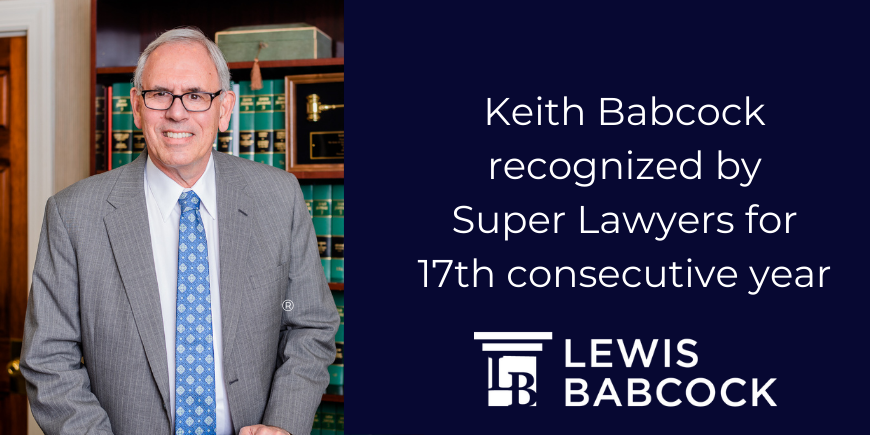
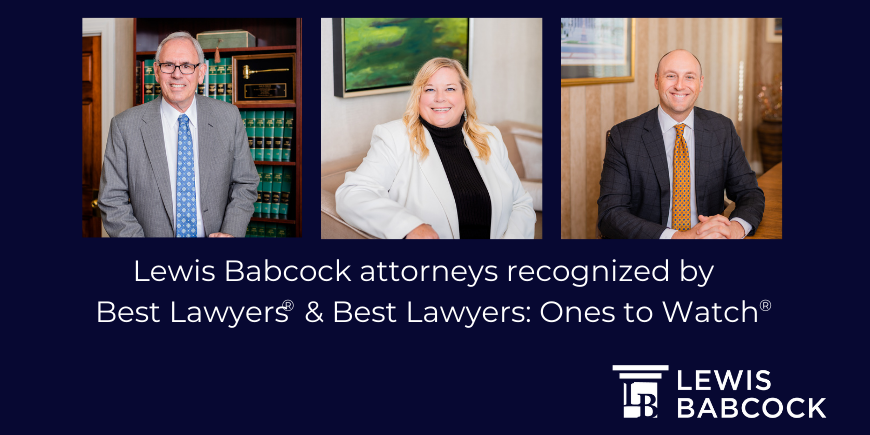

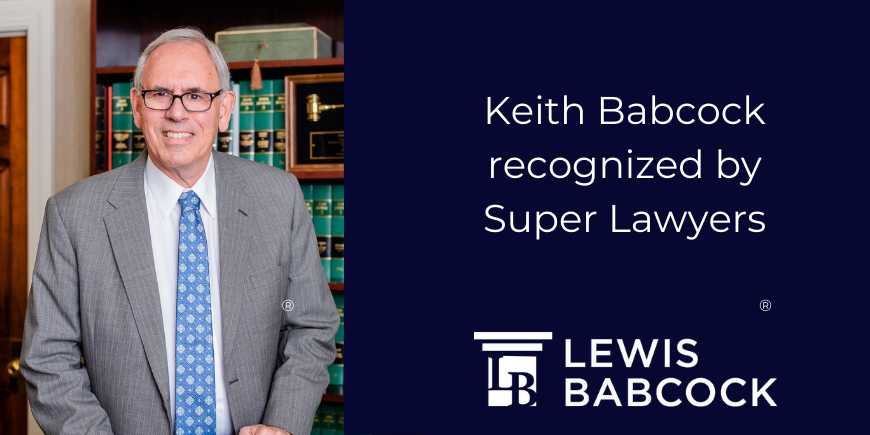
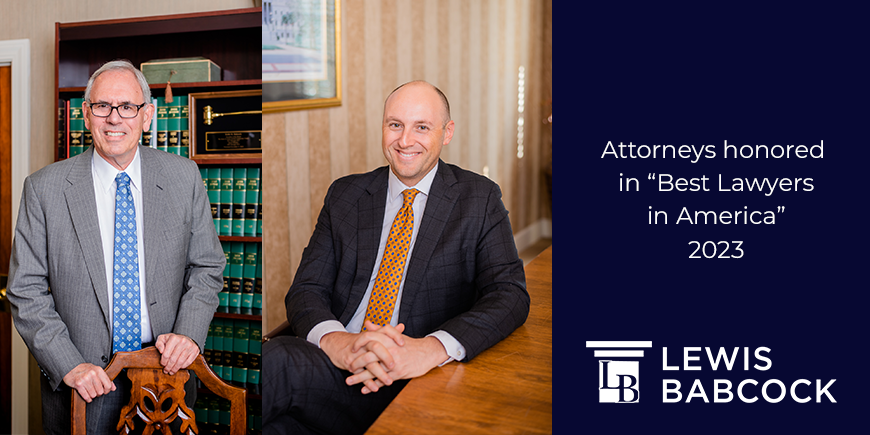
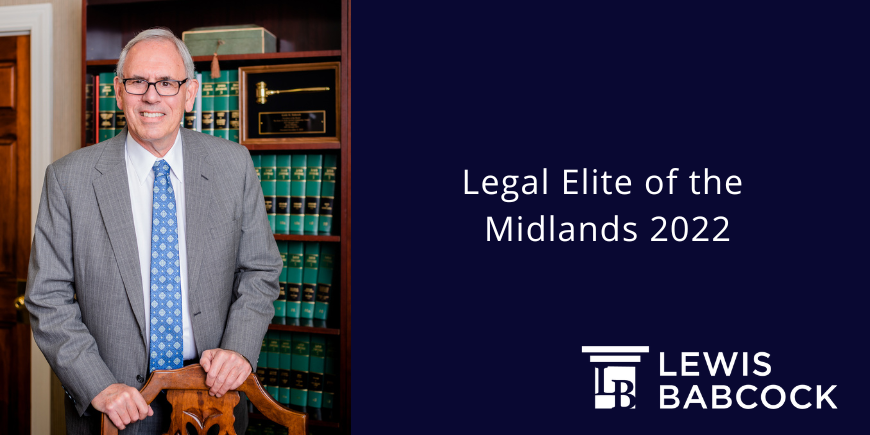
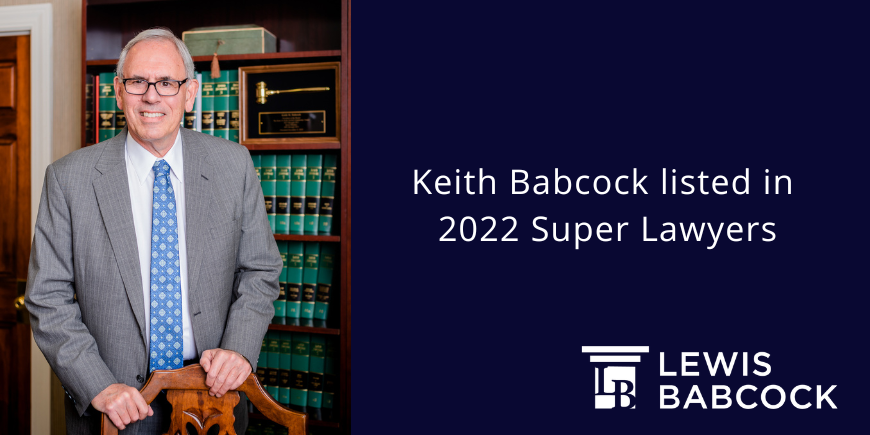

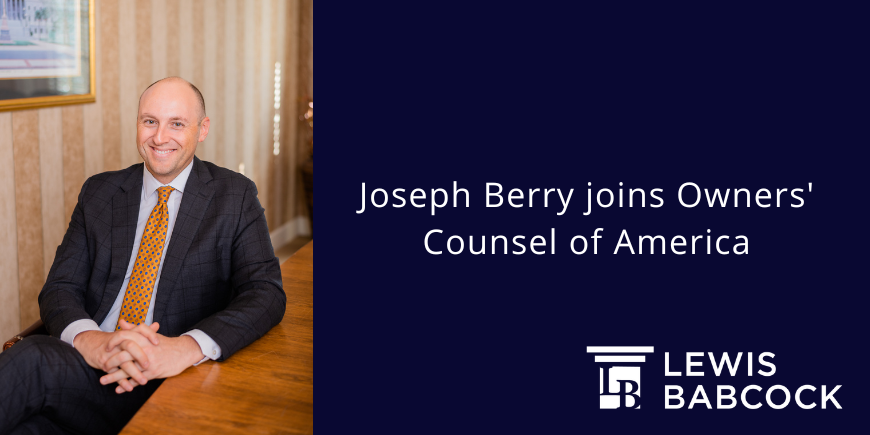
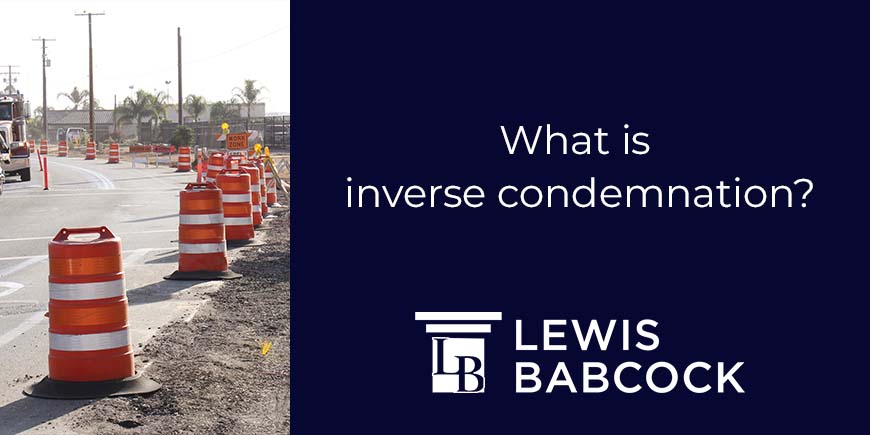
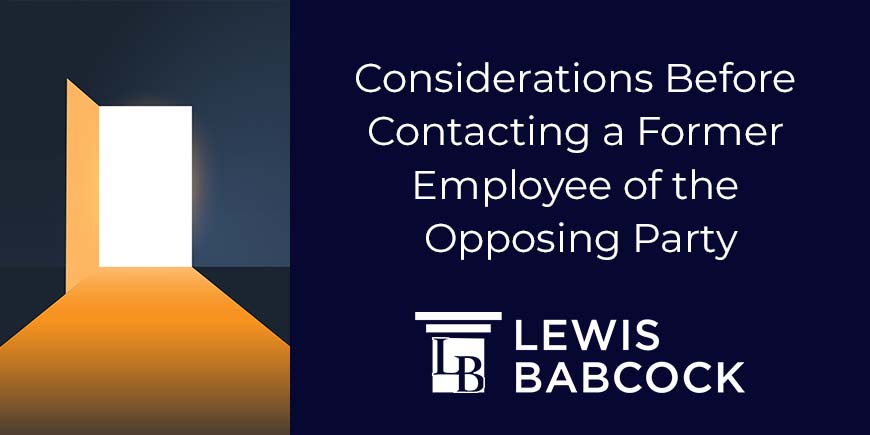
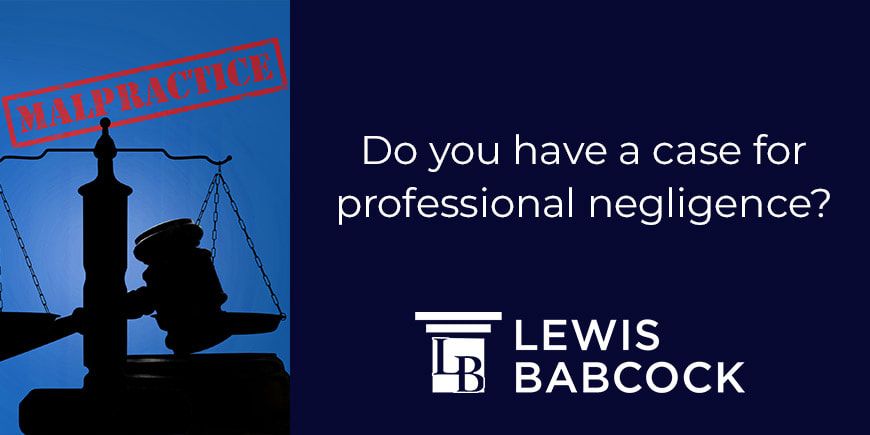
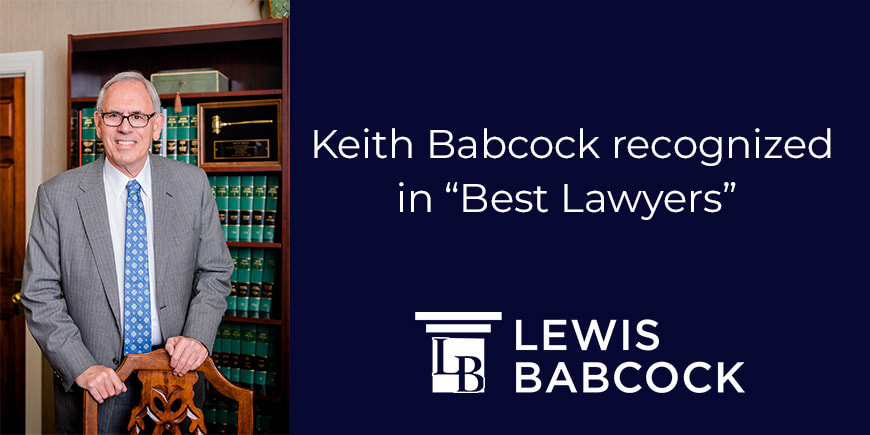

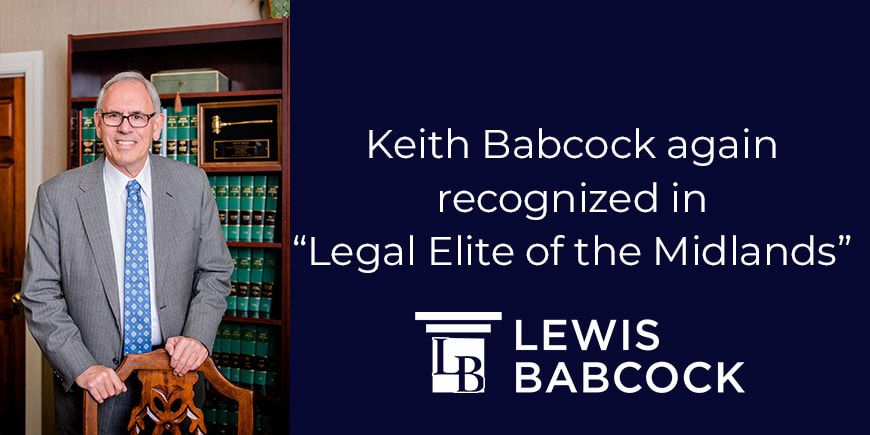
 RSS Feed
RSS Feed
